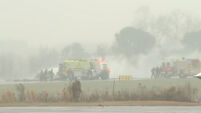Meteor shower 'set to return'
The Leonid meteors make a return appearance in the night sky this week as the Earth ploughs through a comet’s dust trail.
Although nothing like as spectacular as last year, the meteor shower should still reward patient night owls.














